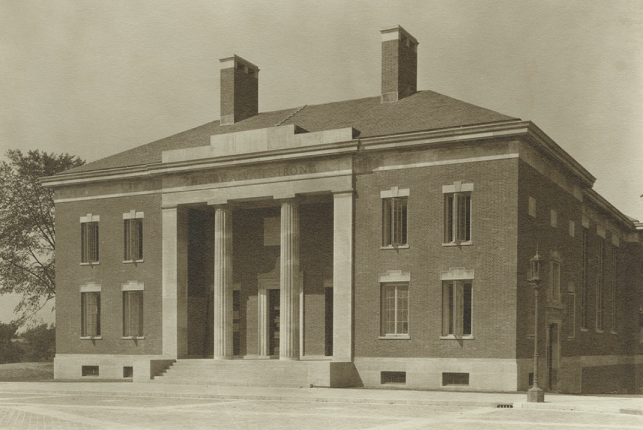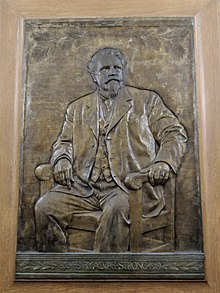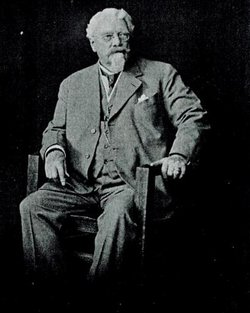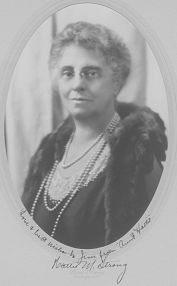
| River Campus | Strong Auditorium |
 |
| Strong
Auditorium in 1930 |
 |
 |
 |
| This building
erected in loving memory by Hattie M. Strong, wife of Henry Alvah Strong and her son Corrin Strong. |
||
Strong Auditorium opened in October 1930 on the north side of Eastman Quadrangle. The building was funded by Helen Phoebe Strong, the widow of Henry Alvan Strong, who died in 1919.
In 1914, Strong had funded Catherine Strong Hall on the Prince Street Campus in memory of his mother. In 1921 his two daughters donated $1 million towards the cost the new Strong Memorial Hospital, named in honor of their parents.
The building has two auditoriums. Upper Strong originally seated 1,200 but now seats 812. Lower Strong originally seated 300 but now seats 400.
The building has had some
cosmetic improvements, but has never been thoroughly renovated. Poor
ventilation and a lack of air conditioning is a major impediment to
holding gatherings in warmer weather.
References
1919 Henry
Alvah Strong (1838-1919) Grave in Mt. Hope Cemetery.
Business Executive, Philanthropist. He was trained for a business career
and worked as a merchant in St. Louis before enlisting for the Civil War.
Strong served as a Union Navy Paymaster and was present at battles in
South Carolina and Alabama, afterwards returning to Rochester, where he
became active in a whip making business. In 1880 he became a partner with
George Eastman in the manufacture of photographic plates, film and cameras
in a company first called Strong & Eastman, later Eastman Dry Plate
and Film, and finally Eastman-Kodak. Strong was its first President,
serving from 1880 until his death. One of Rochester's most prominent
citizens, he also became active in other businesses, including a button
company, a voting machine company, and several banks, insurance companies
and utilities. The expansion of photography made possible by Eastman-Kodak
cameras and film made him one of the wealthiest men in the United States,
which enabled him to engage in philanthropic activities in the Rochester
area and throughout the country during the last twenty years of his life.
Halls and auditoriums at several colleges were named for members of
Strong's family, including facilities on the campus of the Rochester
Theological Seminary and the University of Rochester. Even after years of
donations, at his death his estate was still valued at more than $20
million (nearly $250 million in 2010 dollars), and his descendants have
continued his philanthropy.
1919 "Henry A. Strong, Long Business Associates of George Eastman, Dead in his Eighty-First Year," Democrat and Chronicle, July 27, 1919, page 38.
1920 "University
to Have Its Own Auditorium," Democrat and Chronicle,
December 15, 1920, Page 25.
Mrs. Henry A. Strong Gives $200,000 for Purpose.
1930 The Schiff Photographs of the River Campus | Strong Auditorium | Interior Images |
1977 History
of the University of Rochester, 1850-1962, by Arthur J.
May. Expanded edition with notes
Chapter 22, Oak Hill Becomes River Campus
Before proposals to establish a campus on Oak Hill had crowded to the
fore, the widow of Henry Alvah Strong agreed to finance the construction
of an auditorium, which would include a chapel, on the Prince Street
Campus. But that plan was laid aside in favor of a memorial auditorium to
her husband on the west side of the Oak Hill plaza that approached the
Eastman Quadrangle. The principal hall could seat 1,200 and a basement
room 300.
A large stage and orchestra pit rendered the auditorium suitable for large
academic gatherings or varied types of entertainment. As usual, costs
outran calculations, but Mrs. Strong furnished additional funds, which
George Eastman supplemented, to cover actual expenditures.
© 2021 Morris A. Pierce